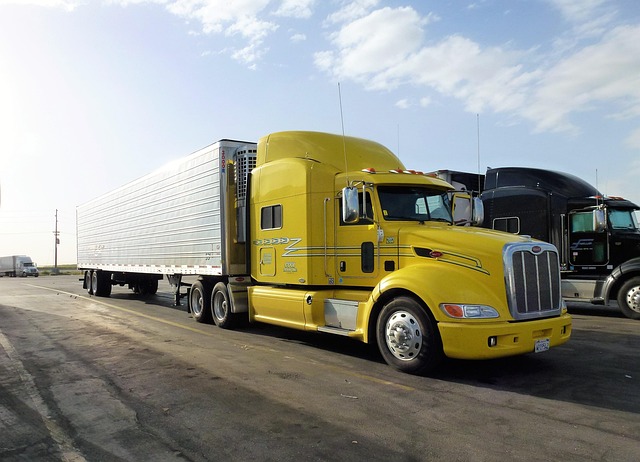Learn how to register your car in California with our step-by-step guide. This comprehensive process ensures you meet all state requirements, from understanding crucial documents needed to using a VIN verifier for vehicle authenticity. We’ll walk you through completing the application, submitting vital information, and paying for your California car registration. By following these simple steps, you’ll be navigating the process like a pro in no time!
- Understanding California Car Registration Requirements
- Gathering Necessary Documents for Registration
- Using VIN Verifier to Ensure Vehicle Authenticity
- Completing the California Car Registration Application
- Submitting and Paying for Your Vehicle Registration
Understanding California Car Registration Requirements

Understanding California Car Registration Requirements
In California, car registration is a critical process that ensures road safety and helps maintain vehicle records. To register your car, you’ll need to meet specific criteria set by the state, including verifying your vehicle’s identification number (VIN). A mobile VIN verifier or mobile VIN verification service can significantly streamline this step. These services allow you to quickly and conveniently confirm your car’s VIN integrity from anywhere, ensuring it matches the information on file with the California Department of Motor Vehicles (DMV).
This process involves providing essential documentation, such as proof of ownership, insurance, and identification. Additionally, you’ll need to pass an emissions test in most cases. Once all requirements are met, including successful mobile VIN inspection, the DMV will issue a registration certificate, which is typically valid for one to three years. Staying informed about these requirements makes the car registration process smoother and helps avoid potential delays or fines.
Gathering Necessary Documents for Registration

Before you begin the registration process, it’s crucial to gather all the essential documents required by the California Department of Motor Vehicles (DMV). This includes your vehicle’s Registration Application (Form DMV-140), a valid driver’s license or ID card, proof of insurance, and the Vehicle Identification Number (VIN) verifier certificate from your mobile vin inspection. A mobile vin verifier can provide you with this digital certificate, which confirms the VIN accuracy of your car, making the registration process smoother.
Additionally, you’ll need to present proof of ownership, typically a title or bill of sale, along with any applicable fees and taxes. The DMV accepts both original and certified copies of these documents. For those who purchased their vehicle out-of-state, an odometer reading statement might be needed. Ensure all paperwork is up-to-date and accurate to avoid delays during the car registration in California.
Using VIN Verifier to Ensure Vehicle Authenticity

When registering your car in California, ensuring the vehicle’s authenticity is a crucial step. One effective method to verify this is by utilizing a vin verifier. This tool checks the Vehicle Identification Number (VIN) against databases to confirm the vehicle’s history and ensure it hasn’t been reported as stolen or had previous damage. By employing a mobile vin inspection or mobile vin verification, you can conveniently validate the car’s integrity right from the comfort of your home or even before finalizing the purchase.
Using a vin verifier is especially important in California, where vehicle registration and title transfer processes are strictly regulated. A simple check through a reputable vin verifier service can protect you from potential legal issues and financial losses associated with buying a car with a false identity or hidden damage history.
Completing the California Car Registration Application

To register your car in California, the first step is to complete the California Car Registration Application. This form can be obtained from the California Department of Motor Vehicles (DMV) website or at any local DMV office. Ensure that all information provided is accurate and up-to-date, including your personal details, vehicle identification number (VIN), and vehicle specifications. The VIN is a unique code that identifies your vehicle, so it’s crucial to enter it correctly. This can be verified using a reliable mobile vin verification service or by visiting a certified vin inspection center to ensure there are no discrepancies.
Once you’ve filled out the application, gather all necessary documents, including proof of insurance, proof of ownership (if applicable), and any other required paperwork. Submit your application along with these documents to the DMV. If you’re using a mobile vin verifier, make sure it’s from a reputable source to ensure the accuracy of your vehicle’s history report. This process will facilitate the registration of your car and ensure that all legal requirements are met for driving on California roads.
Submitting and Paying for Your Vehicle Registration

After ensuring your vehicle meets all required safety standards and emissions tests, it’s time to submit your registration application. In California, this typically involves filling out a Vehicle Registration Application form, available at your local DMV or online. Make sure to include all necessary documentation, such as proof of insurance, proof of ownership (like a title or bill of sale), and identification. Once you’ve compiled these materials, take them to a designated DMV office or use the California DMV Online system to process your application.
The registration fee varies based on vehicle type and age, so it’s crucial to check the official DMV website for accurate up-to-date rates. Payment can usually be made by cash, credit card, or debit card. For added convenience, many residents opt for a mobile vin verifier or conduct a mobile vin inspection to streamline the process, ensuring their vehicle’s information is accurate and accessible before submitting their application.
Registering a car in California involves understanding key requirements, gathering essential documents, verifying vehicle authenticity with a VIN verifier, completing an application, and submitting necessary fees. This process ensures your vehicle complies with state regulations, protecting both you and other drivers on the road. Remember to keep your registration up-to-date for smooth sailing each time you hit the California highways.



